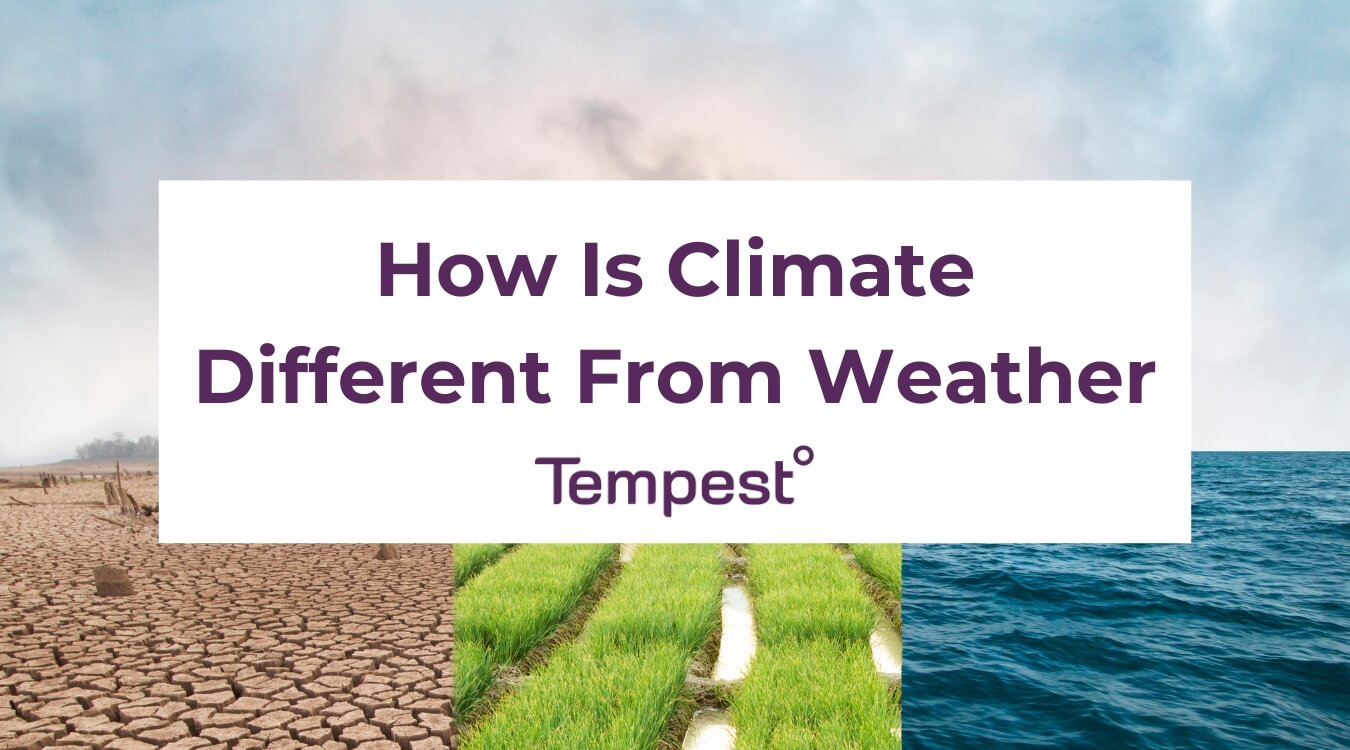
Climate and weather are often used interchangeably, but they are not the same thing. Knowing the difference between weather vs. climate helps you understand forecasts, plan outdoor activities, and see the bigger picture of how our planet is changing.
While weather shows what is happening in the atmosphere right now, climate reveals long-term trends that help researchers track patterns like rising temperatures, shifting rainfall, and extreme events. By comparing the two, scientists can predict future conditions and prepare communities for risks. In this guide, you’ll learn what weather and climate each mean, how they differ, and why both are essential for everyday life.
- What Is Weather?
- What Is Climate?
- What Is The Difference Between Weather And Climate?
- Examples Of Weather And Climate
See what’s happening in your own backyard with the Tempest Weather System, a personal weather station built for hyperlocal accuracy.
What Is Weather?
Weather refers to the short-term atmospheric conditions happening in a specific place at a specific time. It’s what you feel each day, such as a warm afternoon, a sudden thunderstorm, or a cold front moving in overnight.
Temperature, humidity, precipitation, and wind are all parts of the weather. These conditions can change from one hour to the next, shaped by factors like geography, air pressure, and the time of year. Weather instruments and personal weather stations are great tools for everyday people to see the weather happening around them.
For example, a coastal city may experience steady breezes and mild temperatures, while a nearby inland area feels hotter and drier. This variability is why weather forecasts update often, reflecting how quickly weather conditions can shift.
What Is Climate?
Climate describes the long-term average of weather patterns in a particular region. It takes over 30 years of observation to define a climate, which helps scientists understand what type of weather a place usually experiences.
For example, the desert climate of Arizona is known for hot, dry conditions, while the Pacific Northwest is known for its cool, rainy environment. These long-term trends reveal what you can expect most of the time, not what is happening today.
By studying climate, scientists track global patterns like warming trends, droughts, and changes in rainfall that affect agriculture and ecosystems.
Want to understand small-scale variations in climate near you? Read our guide on microclimates to learn more.
What Is The Difference Between Weather And Climate?
The biggest difference between climate vs. weather is time. Weather represents the short-term conditions happening now or in the next few days. Climate is the long-term pattern of weather over many years.
For instance, one hot summer day doesn’t mean a region’s climate is changing. However, if average summer temperatures rise over several decades, that signals a shift in the climate. A simple way to remember it is that weather is like your mood, and climate is like your personality. Weather changes from day to day, while climate stays relatively consistent over time.
Examples Of Weather And Climate
Weather and climate influence nearly every part of life, from how we dress each morning to how cities prepare for the future. The examples of climate and weather below highlight how short-term weather events and long-term climate patterns show up in different ways across the United States.
Weather Examples
- A passing thunderstorm in the afternoon
- A chilly morning followed by a sunny afternoon
- A week of steady rain that floods local streets
- Strong winds before an approaching storm
Climate Examples
- The hot, dry summers of the Southwest
- The humid, rainy environment of the Southeast
- The cold, snowy winters of the Midwest and Northeast
- The mild, wet conditions of the Pacific Northwest
Weather determines what you wear or how you plan your day, while climate shapes how people build homes, grow crops, and adapt to their environments.
Interested in other weather facts? Explore our weather facts for kids that will blow their minds!
Get Accurate Hyperlocal Weather Forecasts With The Tempest Weather System
So, how is climate different from weather? Weather and climate both influence how we live, travel, and prepare for the future. Understanding how weather is different from climate helps you interpret forecasts more effectively and appreciate how short-term changes connect to long-term trends.
The Tempest Weather System uses Nearcast™ Technology to provide hyperlocal data that goes beyond standard forecasts. Whether you’re tracking rainfall in your garden or following long-term temperature changes in your region, Tempest helps you see weather and climate in a whole new way.
Get the most accurate weather insights available with the Tempest Home Weather System, designed to bring precision forecasting right to your home.
